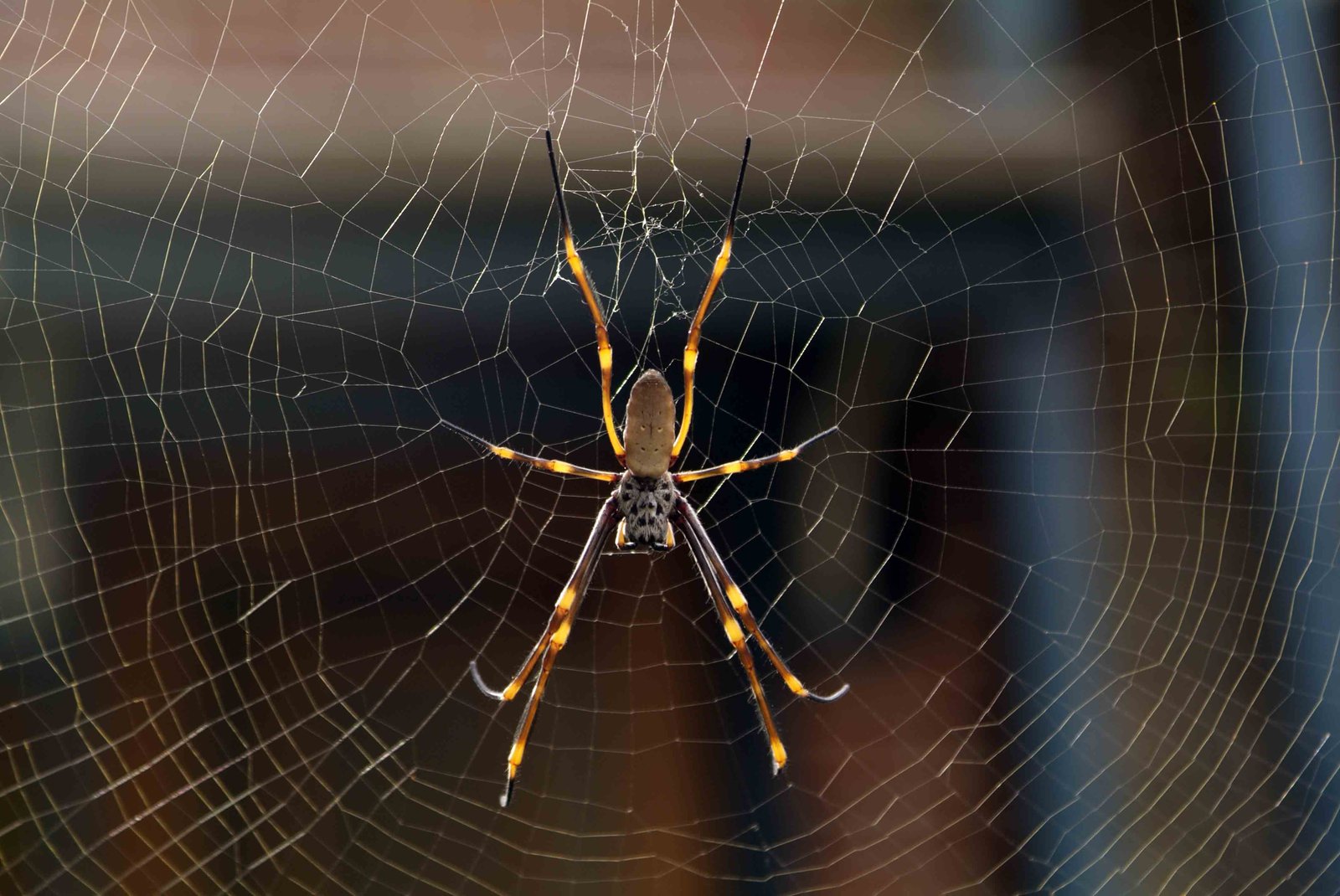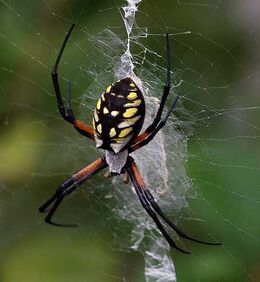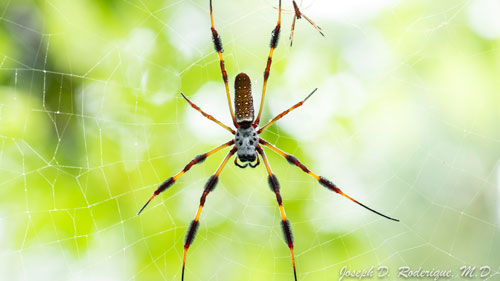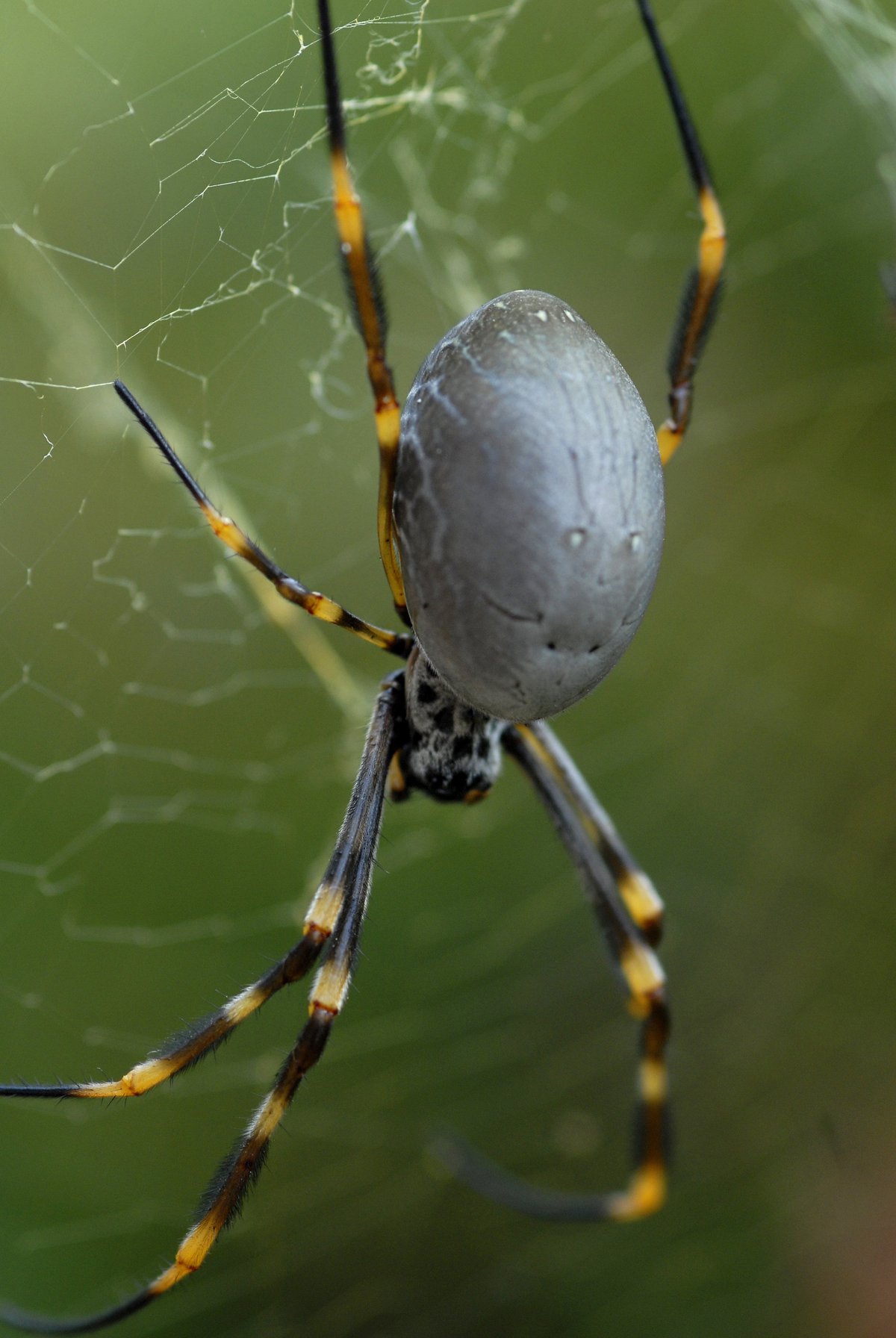Golden silk orb-weavers, also known as banana spiders or giant wood spiders, are large and impressive arachnids found in warm regions around the world. With their striking yellow and black coloration and massive size, it’s natural for people to wonder whether these spiders pose a threat to humans. In this article, we’ll explore the potential dangers of golden silk orb-weavers and provide a comprehensive overview of their behavior and venom.
Other behaviours and adaptations
The Golden Orb Weaving Spiders build large, semi-permanent orb webs. The strong silk has a golden sheen. These spiders remain in their webs day and night and gain some protection from bird attack by the presence of a ‘barrier network’ of threads on one or both sides of the orb web.

Like the St Andrew’s Cross Spider, they will vibrate their webs to distract potential predators. Sometimes aggregations of Golden Orb Weavers are found, with a tangled network of overlapping webs. Their webs are often host to the small kleptoparasitic spiders of the genus Argyrodes (often the Quicksilver Spider, Argyrodes antipodeanus) which inhabit the larger spider’s web and eat the smaller insects that become trapped on the web, thereby helping keep the web clear of debris.
Identification
Golden Orb Weaving Spiders are large spiders with silvery-grey to plum coloured bodies and brown-black, often yellow banded legs. The males are tiny and red-brown to brown in colour. The main difference between the common Sydney species, Nephila plumipes and N. edulis (which is commoner in inland regions) is the presence of a ‘knob’ on the front of the sternum (the heart shaped plate on the underside of the body between the legs) of N. plumipes.
Habitat
Golden Orb Weaving Spiders are found in dry open forest and woodlands, coastal sand dune shrubland and mangrove habitats.
All orb weaving spiders make suspended, sticky, wheel-shaped orb webs. Webs are placed in openings between trees and shrubs where insects are likely to fly.
Distribution
Golden Orb Weaving Spiders are found in dry open forest and woodlands, coastal sand dune shrubland and mangrove habitats, with Nephila edulis and N. plumipes being the two species found in the Sydney region.
In Sydney, the bushes and trees of the Royal Botanic Gardens are a good place to see them, as are the mangrove forests of Bicentennial Park and the Homebush Bay area of the city.
Physical Characteristics
Golden silk orb-weavers are among the largest web-building spiders in the world. Females can grow up to 3 inches (7.6 cm) in body length, with leg spans reaching up to 6 inches (15 cm). Males are significantly smaller, typically measuring less than an inch (2.5 cm) in body length. These spiders are known for their vibrant yellow and black coloration, which serves as a warning to potential predators. Their bodies are covered in fine hairs, and they have large, powerful jaws (chelicerae) used for capturing prey.

Habitat and Behavior
Golden silk orb-weavers are found in tropical and subtropical regions, including parts of Asia, Africa, Australia, and the Americas. They prefer to build their large, spiral-shaped orb webs in areas with abundant vegetation, such as forests, gardens, and urban areas. These spiders are nocturnal and spend most of the day resting in the center of their webs or in a nearby retreat. At night, they wait patiently for insects, small birds, or even small mammals to become entangled in their webs, which they then subdue with their venom and strong jaws.
Venom and Bites
Golden silk orb-weavers are venomous, but their venom is not considered dangerous to humans. While their large size and powerful jaws can deliver a painful bite, their venom is not potent enough to cause serious harm to people. In most cases, a bite from a golden silk orb-weaver will result in localized pain, swelling, and redness, similar to a bee sting. However, some individuals may experience an allergic reaction or have a more severe reaction due to the venom. If bitten, it is always best to seek medical attention, especially if symptoms persist or worsen.


Predators and Prey
Despite their large size and intimidating appearance, golden silk orb-weavers are prey to various animals, including birds, lizards, and other spiders. In turn, these spiders feed on a wide range of insects and small vertebrates that become trapped in their webs. They are particularly adept at capturing flying insects, such as moths and butterflies, using their strong silk and venom.
Conservation and Silk Production
Golden silk orb-weavers have been the subject of conservation efforts due to their unique silk production abilities. Their silk is known for its strength, elasticity, and golden color, which has led to research into potential applications in the textile industry. However, the process of harvesting silk from these spiders is labor-intensive and not commercially viable at this time. Despite their size and appearance, golden silk orb-weavers play an important role in their ecosystems as predators and prey, and their conservation is crucial for maintaining healthy environments.In conclusion, while golden silk orb-weavers are large and impressive spiders, they do not pose a significant threat to humans. Their venom is not potent enough to cause serious harm, and they are generally not aggressive towards people. However, it is always wise to exercise caution when encountering these spiders and to avoid provoking or handling them unnecessarily. By understanding the behavior and characteristics of golden silk orb-weavers, we can appreciate these fascinating creatures and their role in the natural world.
